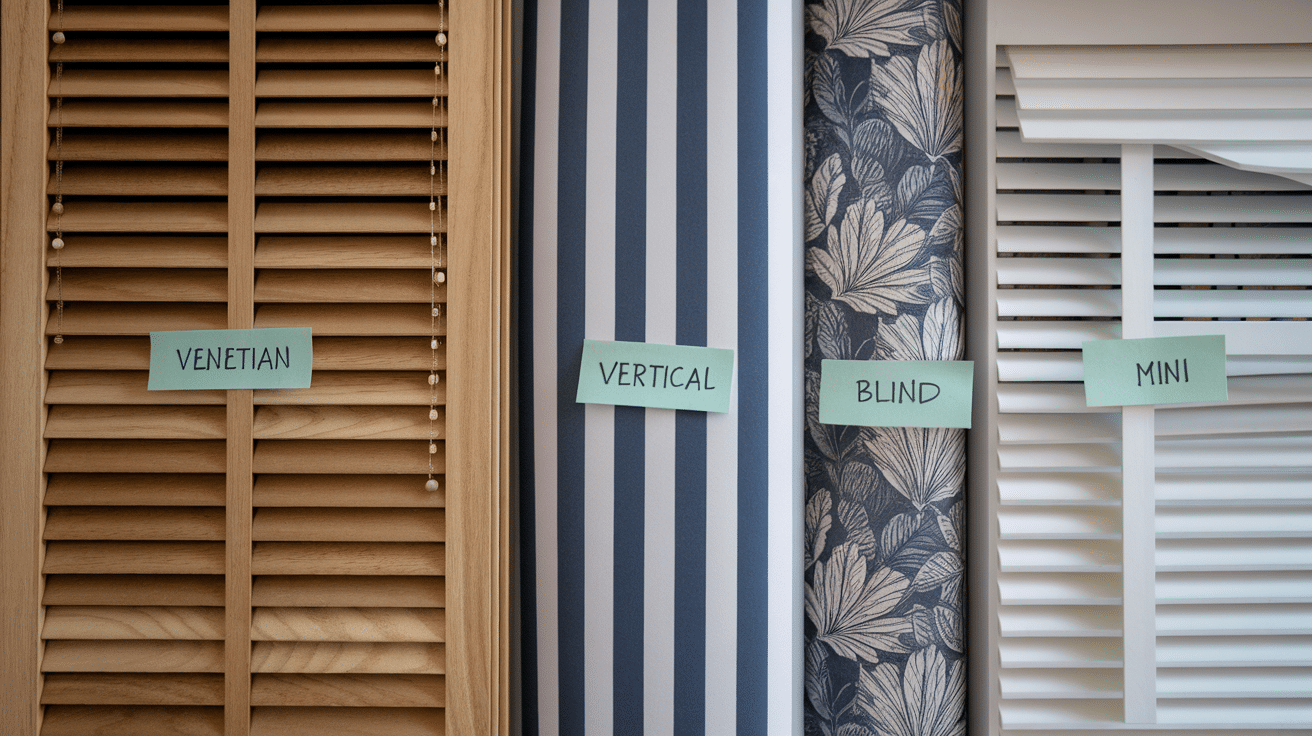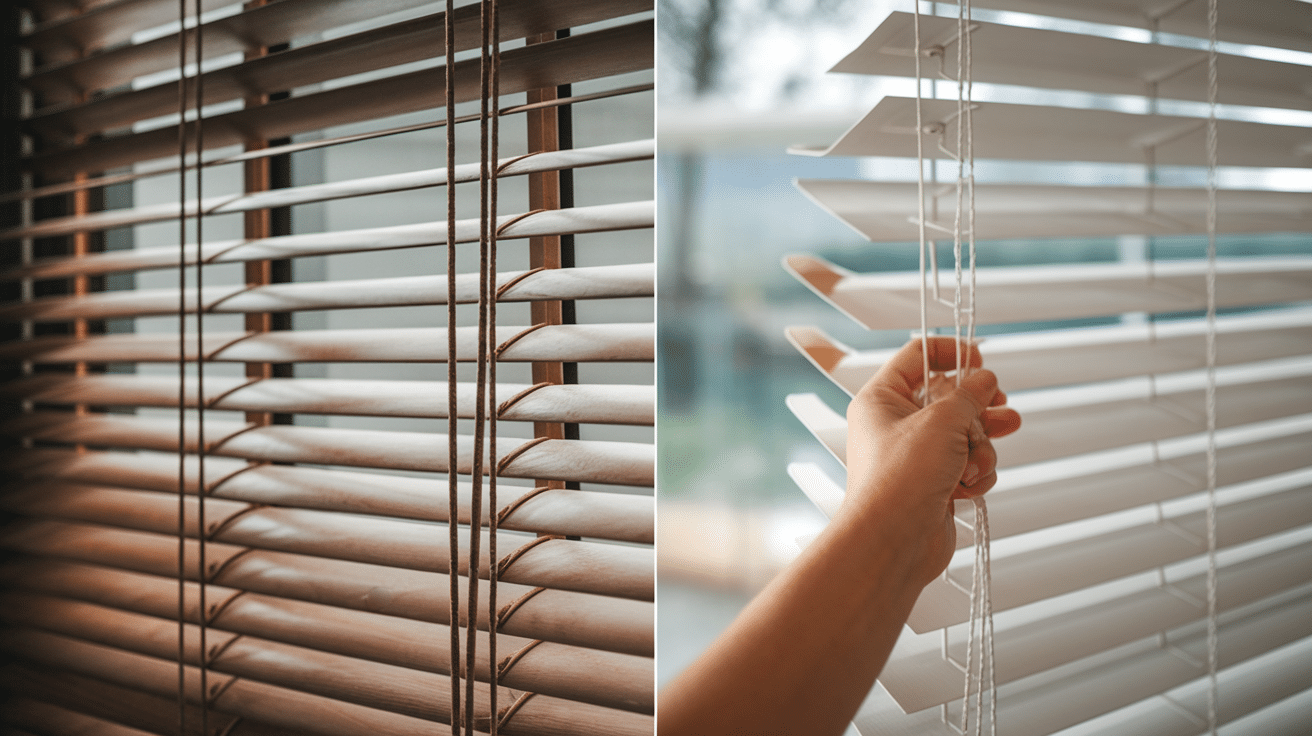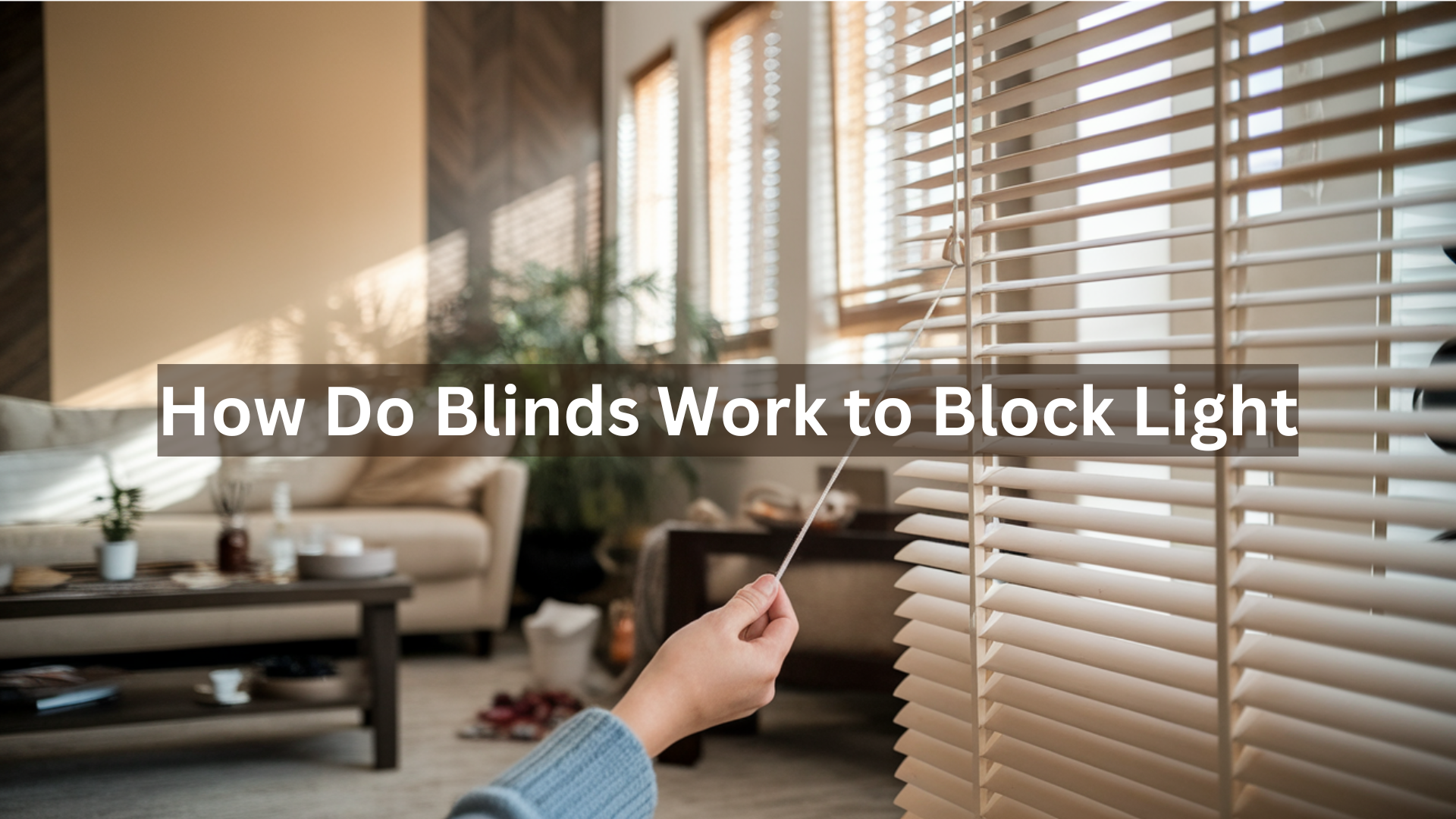Ever wonder exactly how your window blinds keep out that morning sunshine? I did, too, which is why I researched everything about how blinds work. In this article, I’ll explain the science behind blinds, from basic mechanics to smart technology options.
You’ll learn:
- The exact mechanisms that make blinds work
- How to fix common problems yourself
- When it’s time to replace your blinds
- Which types work best for different rooms
I’ve tested dozens of blinds in my own home and talked with window treatment experts to bring you reliable information whether you want total darkness for better sleep, reduced glare on your TV, or lower energy bills, understanding how blinds function will help you make smarter choices.
I promise you’ll find the solution to your light-blocking needs by the end of this article.
The Basics: What Are Blinds, Really?

Window blinds are window coverings made of slats or vanes that can be adjusted to control light, privacy, and airflow. Unlike curtains, which are made of fabric, blinds are typically made of hard materials like wood, metal, or plastic.
The main parts of blinds include:
- Slats – The horizontal or vertical pieces that block light
- Headrail – The top piece that holds the blinds in place
- Bottom rail – The piece at the bottom that adds weight
- Cord or wand – What you use to adjust the blinds
I’ve found that different materials work better in other rooms. For example, metal blinds are great for kitchens, while wood blinds add warmth to living rooms.
The Mechanism: How Blinds Actually Work
The magic of blinds is in their simple yet smart design. When you pull the cord or turn the wand, you’re actually moving a system of small gears and pulleys inside the headrail.
For horizontal blinds, the mechanism is quite fascinating:
- Inside the headrail sits a complex system of lift cords, pulleys, and cord locks
- The lift cords run through each slat and connect to the bottom rail
- When you pull the cord, it activates the cord lock mechanism
- This cord lock works like a brake – pull slightly to release it and pull more to lock it in place
- The pulleys inside create a mechanical advantage, making it easier to lift the weight of all slats
- The tilt mechanism uses a worm gear system – turning the wand rotates a rod that moves all slats in unison
For vertical blinds:
- The headrail contains a track system with carriers for each slat
- Each carrier has a stem that holds the vertical slat
- The main cord pulls all carriers along the track simultaneously
- A separate chain or wand connects to a rotation mechanism
- When turned, this rotates all carriers at once, changing the angle of every slat
- Special spacer links keep all slats evenly separated
I was surprised to learn that this basic design has remained largely unchanged for over 100 years, though materials have improved dramatically!
Corded vs Cordless: What’s the Difference?

Corded blinds have strings that hang down the side. You pull these cords to raise or lower the blinds.
Corded blinds provide a number of benefits:
- Precise height control with the locking mechanism
- Easier operation for very large or heavy blinds
- More affordable than newer cordless options
- Simpler to repair when something breaks
Cordless blinds have a lifting mechanism hidden inside the bottom rail. You push up or pull down on the rail itself.
I switched to cordless blinds in my home after learning they’re:
- Safer for homes with kids and pets
- Less likely to tangle or break
- More clean and modern-looking
The downside? They can be a bit more expensive and sometimes harder to adjust precisely.
Light Control: It’s All in the Angle
The real power of blinds is their ability to control light with precision. This happens because of how light behaves when it hits a surface.
When blinds are fully closed, the slats overlap each other, creating a barrier that blocks most light. When they’re partially open, light can filter through the gaps between slats.
But here’s what I find most useful: adjusting the angle of the slats lets you:
- Block direct sunlight while still letting in ambient light
- Direct light upward to brighten a ceiling
- Point light downward to reduce glare on screens
In my home office, I angle my blinds up to get natural light without the glare on my computer screen.
Energy Efficiency: Yep, They Help
Blinds do more than look good—they help cut energy costs, too.
In summer, closed blinds can block up to 45% of unwanted heat from the sun. In winter, they add a layer of insulation that helps keep warm air inside.
I’ve noticed the biggest difference in my south-facing rooms, where proper blind use has helped keep the temperature more stable. For best results:
- Close blinds during hot summer days
- Open them on sunny winter days
- Close them at night in winter for extra insulation
Light-colored blinds reflect heat better than dark ones, which tend to absorb and transfer heat into your room.
Inside Mount or Outside Mount: Why It Matters
The way blinds are installed affects how well they block light.
Inside mount means the blinds fit inside the window frame. This looks cleaner but can leave small gaps at the edges where light can leak through.
Outside mount means the blinds are attached to the wall above the window and cover the entire window opening. This blocks more light but takes up more wall space.
I chose an outside mount for my bedroom to block the most light, but an inside mount for my kitchen, where the clean look matters more.
Motorized Blinds: The Future is Now
Smart blinds have changed how I use window coverings in my home. These blinds use small motors to open and close, controlled by:
- Remote controls
- Wall switches
- Smartphone apps
- Voice commands with smart home systems
The benefits I’ve seen include:
- Scheduling – My blinds automatically close at sunset
- Hard-to-reach windows are now easy to control
- Smart home integration with my other devices
While the cost is higher, I’ve found motorized blinds worth it for tall windows or for anyone with mobility issues.
Common Problems (and How to Fix Them)
Even the best blinds can have issues. Here are fixes for problems I’ve faced:
Blinds won’t go up or down:
- Check for tangled cords
- Look for objects blocking the path
- Clean the tracks or headrail
Slats won’t tilt:
- Inspect the tilt rod for damage
- Check if any slats are bent or broken
- Clean dust from the tilting mechanism
Uneven blinds:
- Raise blinds fully, then lower them again
- Check if the cords are equal lengths
- Make sure the headrail is level
Light leaking through:
- Add side channels for horizontal blinds
- Install blinds with wider slats
- Consider an outside mount instead of an inside
When to Replace Your Blinds
Blinds don’t last forever. I’ve learned to look for these signs that it’s time for new ones:
- Warped or bent slats that won’t lie flat
- Frayed cords that make operation difficult
- Faded color from sun exposure
- Slats that won’t stay in position when adjusted
- Outdated style that doesn’t match your décor
Most blinds last 5-7 years with regular use. However, with proper care, high-quality wood or aluminum blinds can last 10+ years.
Conclusion
After testing many types of blinds in my home, I’ve come to appreciate their simple yet effective design. The way overlapping slats work together to block or filter light is both practical and customizable to your needs.
The right blinds can transform your space by controlling light, adding privacy, and even cutting energy costs. Whether you choose basic manual blinds or high-tech motorized options, understanding how they function helps you make better choices.
I hope this guide has helped you see blinds in a new light. Next time you adjust your blinds, you’ll know exactly what’s happening behind the scenes. For most light-blocking needs, the solution is as simple as finding the right type of blind and installing it correctly.
Frequently Asked Questions
What’s the Most Effective Blind for Complete Darkness?
Blackout cellular blinds with side channels block the most light. They combine honeycomb-shaped cells with light-blocking fabric and side rails to prevent light leakage.
How Do I Clean Blinds without Damaging Them?
For regular cleaning, use a microfiber cloth or vacuum with a brush attachment. Wood blinds need a special wood cleaner for deep cleaning, while vinyl or aluminum can be soaked in a bathtub with mild soap.
Can I Convert My Regular Blinds to Motorized Blinds?
Yes, retrofit kits are available to motorize existing blinds. These kits typically include a small motor that attaches to the existing headrail and can be controlled via remote or smartphone.
Why Do My Blinds Make a Clicking Sound when Adjusting Them?
Clicking sounds usually come from the cord lock mechanism engaging and disengaging. It’s normal, but excessive clicking might mean the mechanism is wearing out and needs lubrication or replacement.
How Much Light Gap Should I Expect Around My Blinds?
For proper operation, inside-mounted blinds typically have a 1/4 to 1/2 inch gap on each side. If sized correctly, outside-mounted blinds can fully cover the window opening, leaving virtually no light gap.

